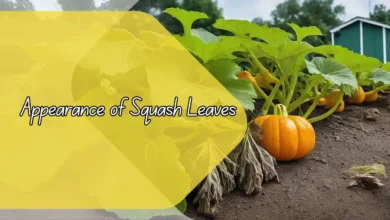
Tips for Growing Cut and Come Again Zinnias
In this article, we will provide you with valuable tips on how to grow, cut, and come again zinnias in your garden. Zinnias are beloved for their vibrant colors and ease of care, making them a popular choice for many gardeners. By following these tips, you can enjoy a continuous supply of fresh zinnia blooms throughout the growing season.
How do I plant zinnia seeds?
When planting zinnia seeds, it is important to choose a sunny location with well-draining soil. Zinnias thrive in full sunlight, so be sure to plant them in a spot that receives at least 6-8 hours of direct sunlight per day.
Prepare the soil by loosening it with a garden fork and adding compost or aged manure to improve drainage and fertility. Scatter the zinnia seeds thinly over the soil surface and cover them with a thin layer of soil. Water gently to avoid dislodging the seeds, and keep the soil consistently moist until the seeds germinate.

How often should I water my zinnias?
Zinnias are relatively drought-tolerant once established, but they do require regular watering to thrive. Water your zinnias deeply once or twice a week, depending on weather conditions and soil moisture levels.
It is best to water zinnias at the base of the plants to prevent fungal diseases and promote healthy root growth. Avoid getting the foliage wet, as this can increase the risk of powdery mildew and other issues. Mulching around zinnia plants can help retain soil moisture and reduce the frequency of watering.

How do I encourage more blooms on my zinnias?
To encourage more blooms on your zinnias, deadhead regularly removes spent flowers and promotes continuous blooming. Simply pinch off faded blooms at the base of the stem to encourage the plant to produce new flowers.
Deadheading also prevents zinnias from setting seeds, which can redirect their energy into producing more blooms.
Additionally, regular fertilization with a balanced fertilizer can help boost flower production and overall plant health. Be sure to follow the recommended application rates on the fertilizer package to avoid overfeeding.

How can I protect my zinnias from pests and diseases?
Zinnias are generally resistant to pests and diseases, but they can still fall victim to common garden problems. To protect your zinnias, monitor them regularly for signs of pests such as aphids, whiteflies, and Japanese beetles. If you notice any pests, you can use insecticidal soap or neem oil to control them naturally.
Fungal diseases like powdery mildew can be prevented by providing good air circulation around zinnia plants and watering at the base to keep the foliage dry. Avoid overcrowding plants and remove any infected leaves promptly to prevent the spread of disease.
How do I harvest zinnias for cut flowers?
When harvesting zinnias for cut flowers, choose blooms that are fully open but not yet fully mature. Use sharp scissors to cut the stem at a 45-degree angle just above a leaf node. Removing flowers regularly encourages the plant to produce more blooms, so be sure to harvest zinnias frequently throughout the growing season.
Place cut zinnias in a bucket of water immediately after harvesting to prevent wilting, and display them in a vase filled with fresh water once you bring them indoors. Changing the water every few days can help prolong the vase life of your zinnia blooms.

How do I overwinter zinnias?
Although zinnias are typically grown as annuals, it is possible to overwinter them in some regions. To overwinter zinnias, you can dig up the plants before the first frost and pot them up to bring indoors.
Place the potted zinnias in a sunny window or under grow lights, and water sparingly to prevent root rot. Zinnias can also be propagated from cuttings taken in late summer or early fall.
Simply take 4-6 inch cuttings from healthy zinnia plants, remove the lower leaves, and place them in a container filled with moist potting soil. Keep the cuttings warm and moist until they develop roots, then transplant them into individual pots.
Conclusion
Growing cut-and-come-again zinnias can be a rewarding experience for gardeners of all skill levels. By following the tips outlined in this article, you can enjoy a bountiful display of colorful zinnia blooms throughout the growing season.
With proper care and attention, your zinnia plants will flourish and provide you with an abundance of cut flowers to enjoy in bouquets, arrangements, and more.
FAQs
Can I grow zinnias in containers?
Yes, zinnias can be grown in containers as long as they receive an adequate amount of sunlight and are planted in well-draining soil. Choose a large container with drainage holes and plant zinnias according to spacing recommendations to ensure proper air circulation and growth.
Are zinnias deer-resistant?
Zinnias are considered deer-resistant plants due to their strong fragrance and slightly bitter taste. While deer may browse on zinnias occasionally, they are less likely to be heavily damaged compared to other plants in the garden.
Do zinnias attract pollinators?
Yes, zinnias are attractive to pollinators such as bees, butterflies, and hummingbirds. The bright colors and abundant nectar of zinnia flowers make them a favorite among pollinators, helping to support the health of your garden ecosystem.
Can I save zinnia seeds for future planting?
Yes, zinnia seeds can be saved for future planting by allowing the flowers to fully mature on the plant and collecting the dried seed heads. Store the seeds in a cool, dry place in an airtight container until you are ready to sow them in the garden.
How long do cut zinnias last in a vase?
Cut zinnias can last anywhere from 5-7 days in a vase, depending on the variety and care provided. To maximize the vase life of zinnia blooms, change the water regularly, recut the stems every few days, and keep the flowers out of direct sunlight and drafts.








